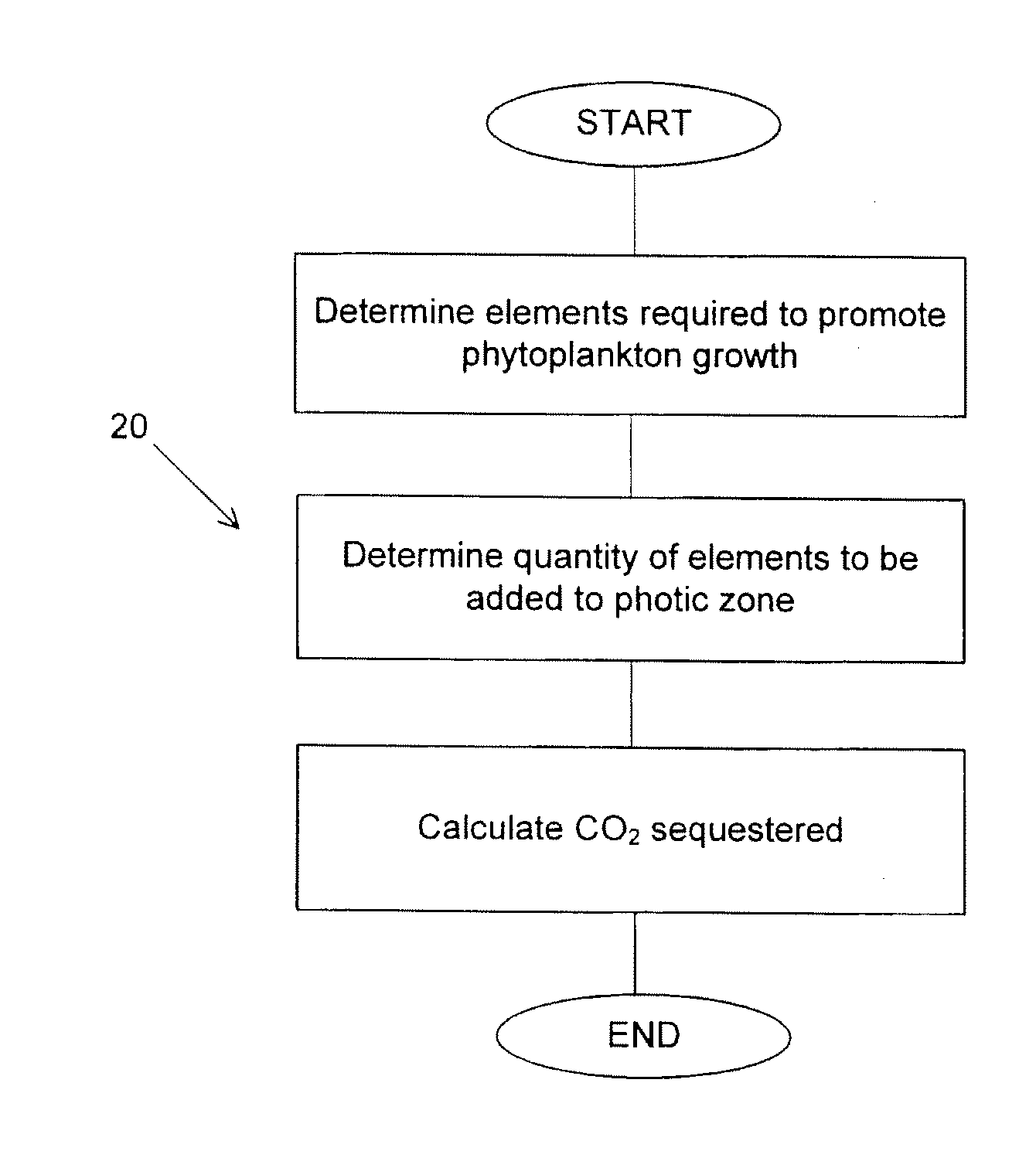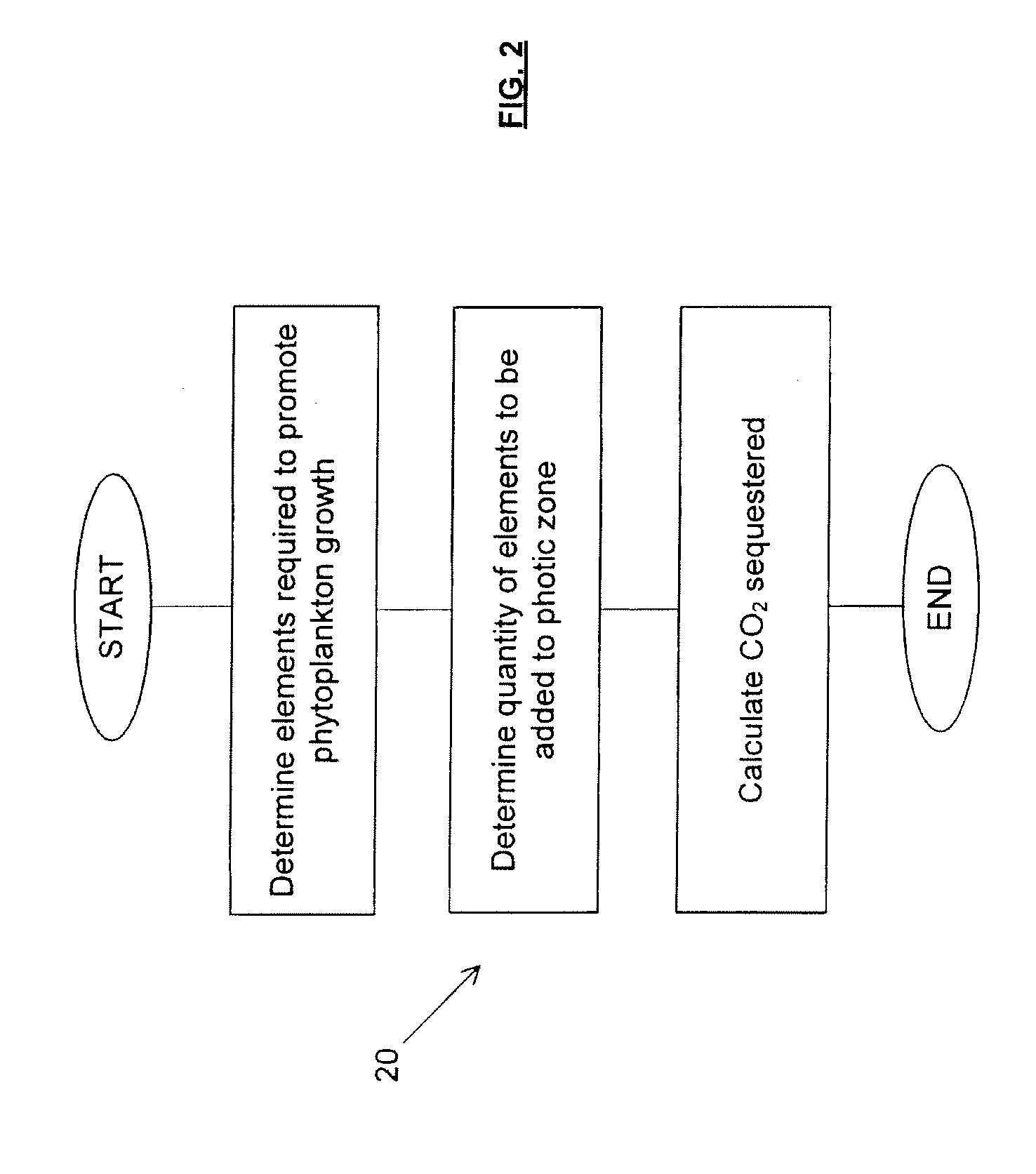Measurement of sequestered carbon
a technology of sequestered carbon and measurement method, applied in the direction of biochemistry apparatus, biochemistry apparatus and processes, forecasting, etc., can solve the problem of limited conversion of carbon dioxide dissolved at the surface of the ocean to organic carbon during the sunlit period, and achieve the effect of reducing the number of measurements
- Summary
- Abstract
- Description
- Claims
- Application Information
AI Technical Summary
Benefits of technology
Problems solved by technology
Method used
Image
Examples
first embodiment
[0068]In some embodiments, it may only be necessary to roughly quantify the amount of carbon dioxide that could be sequestered. In such embodiments (referred to below as “the first embodiment”), the amount of carbon dioxide that can be sequestered from the atmosphere may be calculated using the quantity of the chemical element or elements determined in step (b) and the Redfield ratio.
[0069]The Redfield ratio can be used to describe the stoichiometric ratio of the elements C, N, Si, and P in phytoplankton living in the ocean. The Redfield ratio is typically about 106:16:15:1 (C:N:Si:P). Recent research has resulted in an expansion of the original ratio to include iron, where the ratio of C:N:Si:P:Fe is 106:16:15:1:0.001.
[0070]As a known quantity of the one or more elements has been added (at least one of which will substantially all be consumed by the additional phytoplankton grown) and it is assumed that the ratio of carbon to that element in phytoplankton grown will be in the Redfi...
second embodiment
[0072]However, if it is necessary to more precisely determine the amount of carbon dioxide that can be sequestered from the atmosphere (e.g. if an exact number of carbon credits needs to be produced), in an alternate embodiment (referred to below as “the second embodiment”), the amount of carbon dioxide that can be sequestered from the atmosphere may be calculated using the quantity of the chemical element or elements determined in step (b) and a measured stoichiometric ratio of carbon and the one or more chemical elements in phytoplankton in the photic zone of the portion.
[0073]In the second embodiment, the Redfield ratio is not used, but the stoichiometric ratio of carbon to other element(s) in the phytoplankton in the portion is experimentally determined (i.e. a “local Redfield ratio” is determined). The stoichiometric ratio of carbon and the chemical element(s) in phytoplankton in the portion will indicate the relative proportions of elements required by the phytoplankton in tha...
PUM
 Login to View More
Login to View More Abstract
Description
Claims
Application Information
 Login to View More
Login to View More - R&D
- Intellectual Property
- Life Sciences
- Materials
- Tech Scout
- Unparalleled Data Quality
- Higher Quality Content
- 60% Fewer Hallucinations
Browse by: Latest US Patents, China's latest patents, Technical Efficacy Thesaurus, Application Domain, Technology Topic, Popular Technical Reports.
© 2025 PatSnap. All rights reserved.Legal|Privacy policy|Modern Slavery Act Transparency Statement|Sitemap|About US| Contact US: help@patsnap.com



